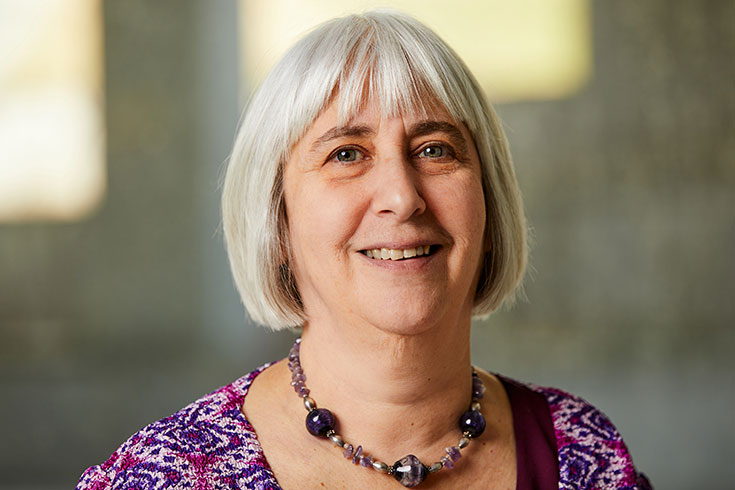NIH Geneticist Wins Breakthrough Prize for Parkinson’s Finding
By Laura Gardner, P’12

Ellen Sidransky (Photo credit: Ernesto Del Aguila III)
Ellen Sidransky ’77, a clinical geneticist and pediatrician at the National Institutes of Health, has won the 2024 Breakthrough Prize in Life Sciences for her discovery of a common genetic risk factor for Parkinson’s disease.
The award comes from the Breakthrough Foundation, whose creators include Google co-founder Sergey Brin and Meta founder Mark Zuckerberg.
Working in the Medical Genetics Branch of the NIH’s National Human Genome Research Institute, Sidransky discovered that mutations in the gene GBA1, which encodes an enzyme that breaks down fatty substances in the lysosomes of cells, are a genetic risk factor for Parkinson’s.
Sidransky learned she had won the Breakthrough Prize several months before the announcement was made in September, but was sworn to secrecy (though she did tell her husband). She shares the $3 million prize with two other scientists who identified another gene, LRRK2, as a Parkinson’s risk factor.
“What’s unique is that from a careful, in-depth study of a rare disease, I ended up with a really cool insight into a common disorder that initially seemed unrelated.”
After completing medical school at Tulane University and a pediatric residency at Northwestern University, Sidransky in 1988 undertook a medical genetics fellowship at the NIH and started studying Gaucher disease, a rare genetic disorder that results from carrying two mutant copies of the GBA1 gene.
Patients with this disorder have insufficient glucocerebrosidase, an enzyme that functions in lysosomes, the organelle responsible for degrading and recycling cellular products. Sidransky noticed that some of her patients with Gaucher disease, as well as their close relatives, went on to develop Parkinson’s, an unexpected finding since the two diseases were thought to be unrelated.
She kept researching the connections between the diseases — one rare, resulting from a single gene; the other common, with many causes — and eventually discovered that 5-14% of patients with Parkinson’s carried variants in the gene for Gaucher disease.
Sidransky subsequently led a much larger study, involving 5,000 Parkinson’s patients and an equal number of controls, that revealed individuals with Parkinson’s were more than five times as likely to carry the variants in the gene for Gaucher disease than the general population.
Ultimately, her research proved GBA1 gene variants are the most common genetic risk factor for Parkinson’s, as well as for dementia with Lewy bodies, a related disorder that leads to earlier cognitive impairment. In the latter disease, the risk for the genetic mutation is more than eight times higher than in controls.
One of the lessons of studying a rare disease is that a discovery can have broad application, says Sidransky.
“What’s unique is that from a careful, in-depth study of a rare disease, I ended up with a really cool insight into a common disorder that initially seemed unrelated,” she says. “This has allowed us to apply what we learned from Gaucher disease to Parkinson’s, and potentially to treatments for Parkinson’s.”
More research needs to be done to elucidate why a variant in the GBA1 gene can lead to Parkinson’s, as well as why most patients with Gaucher disease never develop Parkinson’s.
Sidransky says the research landscape has been transformed by the discovery of the GBA1 risk factor, and interest in understanding the relationship between gene variants, lysosomes, and Parkinson’s and related diseases has skyrocketed.
“Our understanding of these diseases has accelerated rapidly over the past decade,” she says. “I am optimistic the increased research in this field will lead to breakthrough treatments for these devastating disorders in the coming years.”